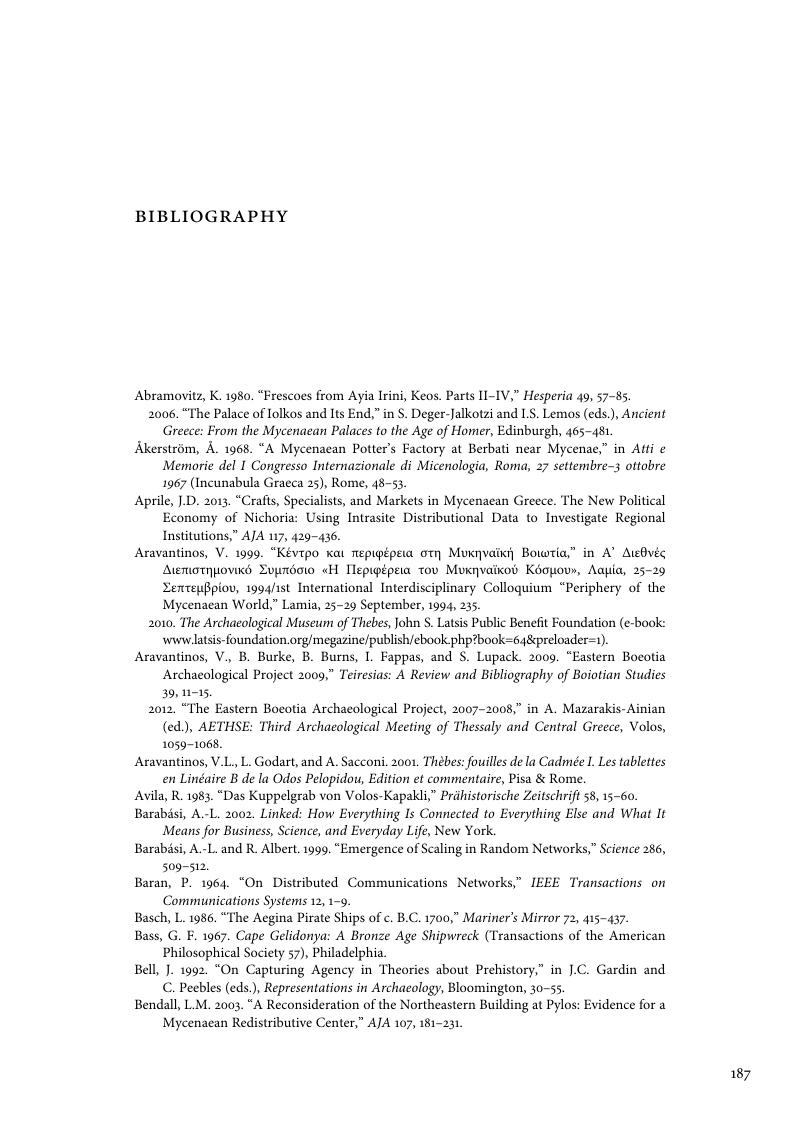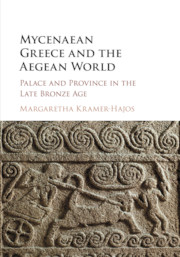Book contents
- Mycenaean Greece and the Aegean World
- Mycenaean Greece and the Aegean World
- Copyright page
- Contents
- Figures
- Tables
- Book part
- 1 Introduction to the region and theoretical approaches
- 2 The ethos of the sword
- 3 The role of elite networks in the Mycenaeanization of the provinces
- 4 Seals and swords and changing ideologies
- 5 Prehistoric politics
- 6 Palatial concerns
- 7 Reactions to collapse
- 8 Modeling collapse and revival
- 9 Conclusions
- Bibliography
- Index
- References
Bibliography
Published online by Cambridge University Press: 05 August 2016
- Mycenaean Greece and the Aegean World
- Mycenaean Greece and the Aegean World
- Copyright page
- Contents
- Figures
- Tables
- Book part
- 1 Introduction to the region and theoretical approaches
- 2 The ethos of the sword
- 3 The role of elite networks in the Mycenaeanization of the provinces
- 4 Seals and swords and changing ideologies
- 5 Prehistoric politics
- 6 Palatial concerns
- 7 Reactions to collapse
- 8 Modeling collapse and revival
- 9 Conclusions
- Bibliography
- Index
- References
Summary

- Type
- Chapter
- Information
- Mycenaean Greece and the Aegean WorldPalace and Province in the Late Bronze Age, pp. 187 - 206Publisher: Cambridge University PressPrint publication year: 2016



